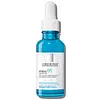What's inside
What's inside
 Key Ingredients
Key Ingredients

 Benefits
Benefits

 Concerns
Concerns

 Ingredients Side-by-side
Ingredients Side-by-side

Water
Skin ConditioningCaprylic/Capric Triglyceride
MaskingIsocetyl Stearoyl Stearate
EmollientTriethylhexanoin
MaskingGlycerin
Humectant1,2-Hexanediol
Skin ConditioningHydrogenated Starch Hydrolysate
HumectantMethyl Gluceth-20
HumectantBenzoic Acid
MaskingBeta-Sitosterol
Emulsion StabilisingC12-20 Alkyl Glucoside
EmulsifyingC14-22 Alcohols
Emulsion StabilisingCarbomer
Emulsion StabilisingDisodium EDTA
Parfum
MaskingPolyglyceryl-10 Myristate
Skin ConditioningSodium Hydroxide
BufferingTocopheryl Acetate
AntioxidantWater, Caprylic/Capric Triglyceride, Isocetyl Stearoyl Stearate, Triethylhexanoin, Glycerin, 1,2-Hexanediol, Hydrogenated Starch Hydrolysate, Methyl Gluceth-20, Benzoic Acid, Beta-Sitosterol, C12-20 Alkyl Glucoside, C14-22 Alcohols, Carbomer, Disodium EDTA, Parfum, Polyglyceryl-10 Myristate, Sodium Hydroxide, Tocopheryl Acetate
Water
Skin ConditioningGlycerin
HumectantAlcohol Denat.
AntimicrobialPropylene Glycol
HumectantPanthenol
Skin ConditioningPentylene Glycol
Skin ConditioningDimethicone
EmollientPEG-6 Caprylic/Capric Glycerides
EmulsifyingPPG-6-Decyltetradeceth-30
EmulsifyingGlyceryl Isostearate
EmollientMadecassoside
AntioxidantSodium Hyaluronate
HumectantAmmonium Polyacryloyldimethyl Taurate
Emulsion StabilisingDisodium EDTA
Hydrolyzed Hyaluronic Acid
HumectantCaprylyl Glycol
EmollientCitric Acid
BufferingXanthan Gum
EmulsifyingButylene Glycol
HumectantTocopherol
AntioxidantPhenoxyethanol
PreservativeParfum
MaskingWater, Glycerin, Alcohol Denat., Propylene Glycol, Panthenol, Pentylene Glycol, Dimethicone, PEG-6 Caprylic/Capric Glycerides, PPG-6-Decyltetradeceth-30, Glyceryl Isostearate, Madecassoside, Sodium Hyaluronate, Ammonium Polyacryloyldimethyl Taurate, Disodium EDTA, Hydrolyzed Hyaluronic Acid, Caprylyl Glycol, Citric Acid, Xanthan Gum, Butylene Glycol, Tocopherol, Phenoxyethanol, Parfum
 Reviews
Reviews

Ingredients Explained
These ingredients are found in both products.
Ingredients higher up in an ingredient list are typically present in a larger amount.
Disodium EDTA plays a role in making products more stable by aiding other preservatives.
It is a chelating agent, meaning it neutralizes metal ions that may be found in a product.
Disodium EDTA is a salt of edetic acid and is found to be safe in cosmetic ingredients.
Learn more about Disodium EDTAGlycerin is already naturally found in your skin. It helps moisturize and protect your skin.
A study from 2016 found glycerin to be more effective as a humectant than AHAs and hyaluronic acid.
As a humectant, it helps the skin stay hydrated by pulling moisture to your skin. The low molecular weight of glycerin allows it to pull moisture into the deeper layers of your skin.
Hydrated skin improves your skin barrier; Your skin barrier helps protect against irritants and bacteria.
Glycerin has also been found to have antimicrobial and antiviral properties. Due to these properties, glycerin is often used in wound and burn treatments.
In cosmetics, glycerin is usually derived from plants such as soybean or palm. However, it can also be sourced from animals, such as tallow or animal fat.
This ingredient is organic, colorless, odorless, and non-toxic.
Glycerin is the name for this ingredient in American English. British English uses Glycerol/Glycerine.
Learn more about GlycerinParfum is a catch-all term for an ingredient or more that is used to give a scent to products.
Also called "fragrance", this ingredient can be a blend of hundreds of chemicals or plant oils. This means every product with "fragrance" or "parfum" in the ingredients list is a different mixture.
For instance, Habanolide is a proprietary trade name for a specific aroma chemical. When used as a fragrance ingredient in cosmetics, most aroma chemicals fall under the broad labeling category of “FRAGRANCE” or “PARFUM” according to EU and US regulations.
The term 'parfum' or 'fragrance' is not regulated in many countries. In many cases, it is up to the brand to define this term.
For instance, many brands choose to label themselves as "fragrance-free" because they are not using synthetic fragrances. However, their products may still contain ingredients such as essential oils that are considered a fragrance by INCI standards.
One example is Calendula flower extract. Calendula is an essential oil that still imparts a scent or 'fragrance'.
Depending on the blend, the ingredients in the mixture can cause allergies and sensitivities on the skin. Some ingredients that are known EU allergens include linalool and citronellol.
Parfum can also be used to mask or cover an unpleasant scent.
The bottom line is: not all fragrances/parfum/ingredients are created equally. If you are worried about fragrances, we recommend taking a closer look at an ingredient. And of course, we always recommend speaking with a professional.
Learn more about ParfumWater. It's the most common cosmetic ingredient of all. You'll usually see it at the top of ingredient lists, meaning that it makes up the largest part of the product.
So why is it so popular? Water most often acts as a solvent - this means that it helps dissolve other ingredients into the formulation.
You'll also recognize water as that liquid we all need to stay alive. If you see this, drink a glass of water. Stay hydrated!
Learn more about Water